How to Deal with Unusual Prior Art in the Determination of Inventive Step?
February 11, 2019
The EPO’s Problem-Solution-Approach is, on the face of it, simple and widely applied also in the national jurisprudence of the EPC member states. It starts with the determination of a “closest prior art document” (CPAD) which is to serve as the starting point of the further analysis. It is then evaluated which technical differences exist between this closest prior art document and the claimed invention, and which problem the claimed invention objectively solves over this CPAD. Thereafter it is examined whether it was obvious to solve this objective problem in the way as the claimed invention does. Both the closest prior art document itself, as well as further prior art documents and the skilled person’s common general knowledge are scrutinized in regard to this question. A combination of two or more documents usually requires a motivation or pointer for it to be obvious.
So far, so good. But what happens if the closest prior art document is not enabled, or if the results it describes are not reproducibly obtainable, because essential information is missing? And what if the secondary prior art document arguably discloses some of the information missing in the CPAD, but in a quite different context and without essential information that could motivate the skilled person to take it further and use it in the context of the CPAD?
These interesting legal questions formed the backdrop before which multi-national patent litigation and two EP opposition proceedings unfolded [disclosure: this author has been involved in several of these proceedings on behalf of the patentee]. More specifically, the lawsuits revolved around a patent family concerning a formulation for AstraZeneca’s successful breast cancer drug fulvestrant (Faslodex®), of which aspects have already been discussed on this blog here (NL) and here (DK). A decision by the Higher Regional Court of Düsseldorf in another patent family relating to a further medical use of fulvestrant has also been reported lately on this blog.
Two members of the formulation patent family stand out: EP 1 250 138 and its divisional EP 2 266 573. Both patents refer to a specific formulation of the antiestrogen drug fulvestrant and its use in the treatment of breast cancer via intramuscular injection. The ‘138 patent was granted based on claims directed to the formulation as such. A subsequently filed opposition was rejected and the patent maintained as granted. On appeal, however, a third party introduced a new reference (“McLeskey”) that was said to disclose a formulation falling under the claims of EP’138 and thus appeared to be highly relevant in regard to these claims. However, this formulation was only used in the quite different context of an exploratory mechanistic study looking at a different (estrogen-independent) type of breast cancer, against which this formulation showed no efficacy even at extremely high doses, when given to transfected mice via weekly subcutaneous injections. McLeskey also contained no data about the physical properties of the formulation, its pharmacokinetics and, in particular, its safety, its efficacy against estrogen-dependent breast cancer and the duration of its effect.
Following the introduction of “McLeskey”, the Board of Appeal remitted the case back to the first instance where AstraZeneca amended the claims of EP‘138 into “formulation for use” claims, arguing that the use of McLeskey’s formulation for the treatment of breast cancer was neither disclosed in McLeskey nor obvious therefrom. The Opposition Division agreed and maintained EP‘138 in the thus-amended form. As the sole opposition had been withdrawn before the OD’s decision and no appeal was filed, this decision became final.
In the meantime, the divisional EP’573 was also granted with “formulation for use” claims and opposed by five generic manufacturers. The opposition grounds raised were added subject-matter (Art 76 / Art 123(2) EPC), lack of novelty (Art 54 EPC), lack of inventive step (Art 56 EPC) and insufficient disclosure (Art 83 EPC). The inventive step argument used by the opponents was mainly based on the assertion that the patent is not inventive over a combination of CPAD “Howell” (used as starting point) with “McLeskey”.
Howell was used as CPAD by the Opponents, since it described a Phase II clinical trial, in which a formulation containing 50 mg/ml fulvestrant in a castor oil-based vehicle was intramuscularly administered to patients having a tamoxifen-resistant breast cancer. However, undisputedly, the reference did not disclose the complete formulation that had been used in this clinical study. In particular, Howell was missing a disclosure of the co-solvents needed to provide the desirable physical and biological properties of the formulation tested. Yet it was precisely the composition of these co-solvents which formed the core of AstraZeneca’s patented invention. AstraZeneca therefore argued that Howell was not enabled, or that at least the therapeutic success shown in Howell should not be assigned to the state of the art (because Howell’s results were not made available to the public in a reproducible way). In fact, according to AstraZeneca it was the opposed patent that disclosed for the first time a formulation that was safe, efficacious and provided the necessary even release of therapeutic levels of fulvestrant, so that it enabled its use as a long-acting depot preparation in the treatment of breast cancer by intramuscular administration. These effects should therefore go into the objective technical problem solved by the EP‘573 patent, rather than be assigned to Howell. AstraZeneca further argued that there was no pointer in McLeskey for the solution of this problem.
While these arguments proved to be successful when defending EP’138 in opposition proceedings before the EPO, a different EPO Opposition Division revoked the EP’573 for lack of inventive step in view of Howell in combination with McLeskey. This led to a bit of a “rollercoaster ride” (as Presiding Judge Kircher of the Regional Court of Mannheim quipped) for both parties in the numerous national infringement and revocation litigations between AstraZeneca and its generic competitors who used exactly the formulation claimed and exemplified in both patents. Due to the two diverging decisions of the EPO, i.e. the maintenance of EP’138 on the one hand and the revocation of EP’573 on the other hand, the results of the national infringement and nullity courts were likewise inconsistent: In some countries (e.g. Denmark, Italy) the generics were initially successful, in other countries (e.g. Finland, Greece, Scotland) AstraZeneca prevailed, and in others (e.g. Germany, the Netherlands, Spain, Switzerland) the outcome varied from instance to instance.
But the story continues. AstraZeneca appealed the first instance EPO decision relating to EP’573, and oral proceedings took place before the Technical Board of Appeal 3.3.01 on 23.1. and 24.1.2019. These proceedings ended with a significant success for AstraZeneca: The Board of Appeal ruled that the decision by the opposition division is set aside and that the oppositions are rejected. That is, the EP‘573 patent was maintained as granted.
In addition, also the Court of Appeal of the Netherlands and the Swiss Bundesgericht recently issued important decisions in favour of the patentee. By now, AstraZeneca has won 9 recent decisions (CH appeal, 2 * GR, 2 * PL, FI, SE, NL appeal and EPO appeal) and obtained one favourable technical opinion in the ongoing Swiss proceedings. Thus, although several proceedings are still ongoing and each and every court is (and should of course be) autonomous in its decision-making, it seems that the rollercoaster ride is levelling out and that the national courts and the EPO are converging in finding that a combination of the unreproducible CPAD Howell with McLeskey does not render the invention underlying AstraZeneca’s patents obvious.
You may also like



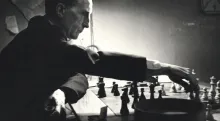




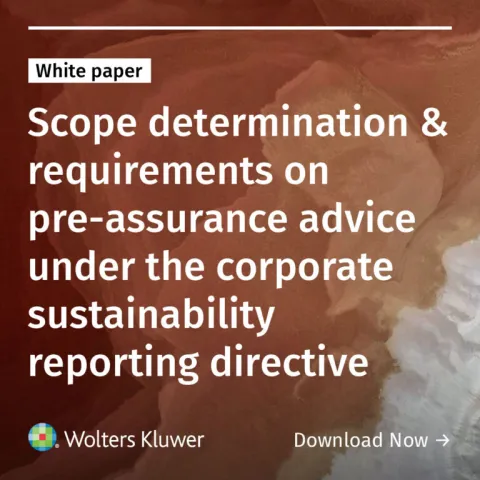

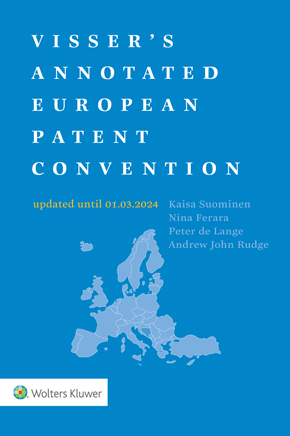
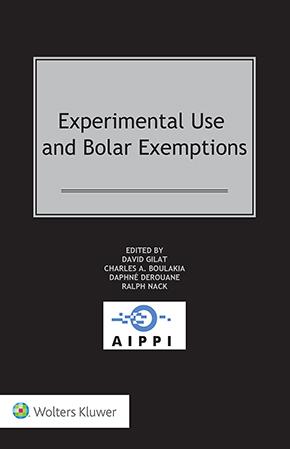

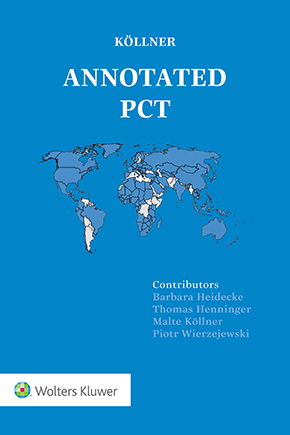

MaxDrei
Thorsten, thanks. I have a question. You write that the EPO's Approach is: "widely applied also in the national jurisprudence of the EPC member states" and then you report that the results of the nullity trials in various national courts were "inconsistent". So my question: Is that inconsistency the consequence of their all adopting the "simple" EPO Approach to deciding what is unpatentably "obvious"? It can't be made any simpler, can it? But is it perhaps too "simple"? Correct me if I'm wrong, but i had thought that there are very few courts in Europe that scrupulously follow the EPO's Problem and Solution Approach to the letter. My sense is that they all pay lip service to it but then, in the end, do their own thing. Or not?
Attentive Observer
One should never forget that the Problem-Solution-Approach (PSA) is nothing more than a tool, developed by case law of the BA (starting in chemistry, and later spreading to other technical areas), and not a condition set out in the EPC. It is a tool but may be not a perfect one, especially if it is not correctly applied. When it comes to the PSA, there are inherent difficulties, and what often is to be seen, is something which I would call an imitation of PSA. It looks like PSA, but it is not a proper PSA. The difficulties start with the choice of the closest prior art (CPA). There are numerous decisions of the BA of the EPO in which the choice of CPA by first instance divisions has been challenged by the BA, and another document took its place. Then there is the definition of the problem which should not contain a pointer towards the solution. The PSA is now established practice, and all representatives having sat the EQE should be familiar with it, as it applying correctly the PSA is a condition for success at the EQE. When the information missing in the CPA is found in a different document, but in a different context that makes it unsuitable in the combination with the CPA, or dissuade the skilled person to use it, this should not be ignored or swept away. We are here in the famous discussion between what the skilled person could do and what it would do in the circumstances, but this is not a specific problem linked with the PSA, but much more general when it comes to assessing inventive step. For an opponent, the skilled person could do a lot, and for the proprietor he would never do anything when it comes to combining documents. If a prior art document is not enabling, for whatever reason, then it cannot be used as prior art. Any discussion about this point is superfluous, see Guidelines G-VI, 4 and G-IV, 2. This is valid whether the not enabled document is used as CPA or in order to be combined with another document which is enabled. When looking at the files EP 1 250 138 (parent) and EP 2 266 573 (divisional), one cannot fail to notice, that totally different examining and opposition divisions have acted in those different phases. Even after remittal, it was another opposition division which dealt with the file. I would have thought that for reasons of coherence, the examining and/or divisions in case of a parent and a divisional application should be the same. That some time went by between the prosecution of the parent and of the divisional applications/patents, could partly explain the different divisions, but that for a divisional a totally opposite decision on inventive step appears quite surprising, especially when there is no different prior art. The “rollercoaster ride” could have been avoided by a better file management by the EPO. But in the meantime, the push for production had fully blown up. Please do however not forget that the quality of the work done by the EPO has increased from 2010 to 2018…. Techrights: FINGERS OFF!!
epo observer
Dear Thorsten, Like MaxDrei, I disagree with your statement that the problem-solution approach would be widely used by the courts of EPC member states. For a review, see : Fordham Intellectual Property Institute – 18th Conference Session 9C – Obviousness/Inventive Step – Comparative view A European approach towards the assessment of inventive step by the EPO and national judges? A Dutch perspective Robert van Peursem - Vice President District Court The Hague - IP Department New York, 9 April 2010 (note : Robert van Peursem's current position is Advocate General with the Supreme Court of the Netherlands) While this presentation took place in 2010, it is still valid today. The problem-solution approach is strong but it is not universal. There are cases where it is not a valid approach and should not be used. It works well for improvement inventions : in such a case, there is an indisputable definition for the "closest prior art", which relates to the thing to be improved and the relevant field of use. But there are not infrequent cases where such indisputable closest prior art is not available, in which case the problem-solution approach is not valid and its use creates issues of its own making. This must not be viewed as a matter of inconsistent application by national courts. Rather, the limits to the validity of the problem-solution approach should be recognised. There is a denial here because the problem-solution approach is dogma at the EPO and among European patent attorneys, and it seems everyone would be at a loss if in a given case the problem-solution approach was recognised as invalid and had to be dispensed with.
A friend of the EPO
I would agree that the PSA is not used so widely in courts of EPC member states. I would also not say that it is a dogma at the EPO. Both statements have something apodictic which is never good. The PSA is nothing more than a tool, and I cannot agree that "there are not infrequent cases where such indisputable closest prior art is not available". This is simply not realistic. Nowadays pioneer inventions are rather infrequent (two examples: bipolar or field effect transistors, xerography). In those cases which opened totally new fields of technology, it can be said that there is no prior art, and hence for those cases I can agree that the PSA is no good. But then it should not be difficult to decide on inventive step, with or without the PSA. In most of the cases when nowadays an invention is made, the inventor does not start from scratch, he has a technical problem which is not solved in some kind of prior art. Hence, there is necessarily prior art. Whether you call this the closest prior art or not is a matter of label and not of substance. It is clear that in some applications no real prior art is stated, or only in very vague terms. But those applications are not in accordance with R 42(1, b). There might cases in which few documents come equally close to an invention, but then the PSA ought to be carried out from all those possible starting points. But this does not mean that there is "no indisputable closest prior art". In such a situation case law has made clear that it is enough if one of those combinations leads to a lack of inventive step, then the subject-matter of the claim is not inventive, irrespective whether a different conclusion can be reached with other combinations. In order to demonstrate that there is inventive step in such a situation all combinations have to be looked at, and it is only if all combinations can lead to the conclusion that the subject-matter is not obvious, then the claim is allowable. However, those cases remain an exception. But to generalise that "there are not infrequent cases where such indisputable closest prior art is not available" is apodictic as the other statements made. No case has ever been lost before a first instance division or before a board of appeal by not using the PSA. If the arguments in favour of inventive step are strong enough any way used will lead to success. When it comes to lack of inventive step, the PSA has at least the benefit to systematise the reasoning and to avoid jumping at the conclusion without proper argumentation, or worse to decide ex-post facto in full knowledge of the invention, i.e. of the technical solution to a technical problem.